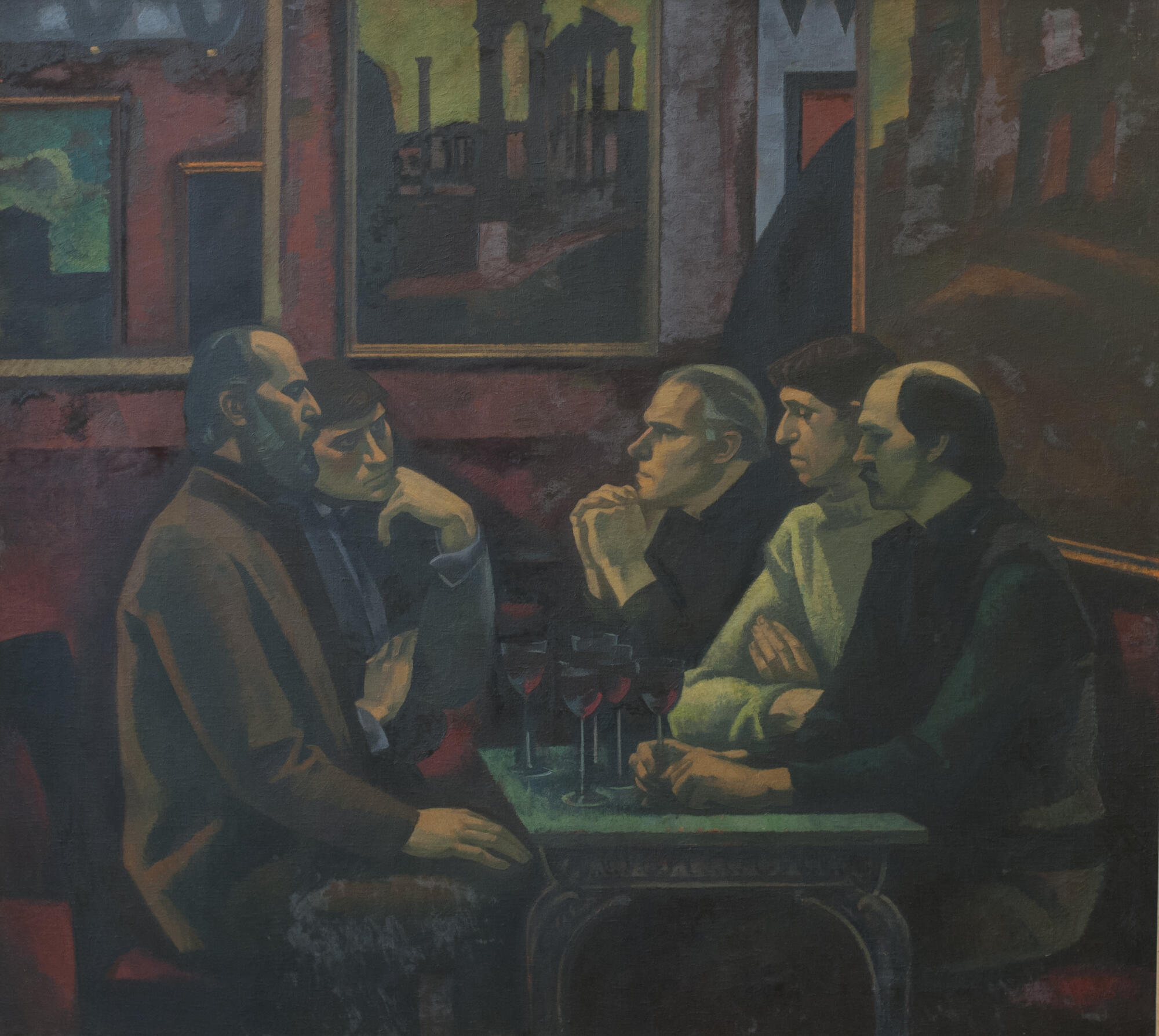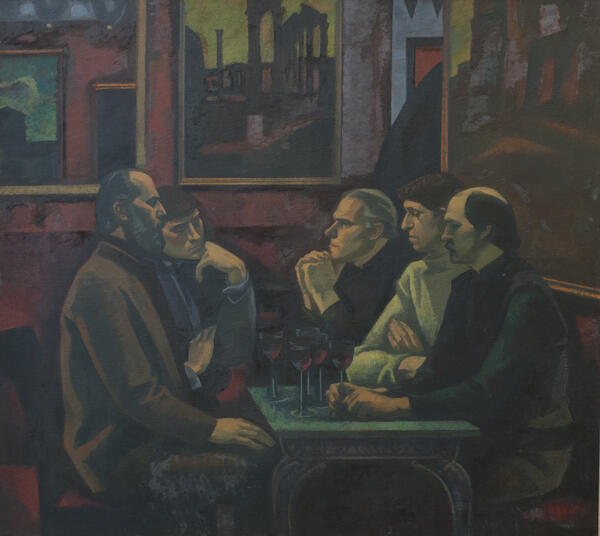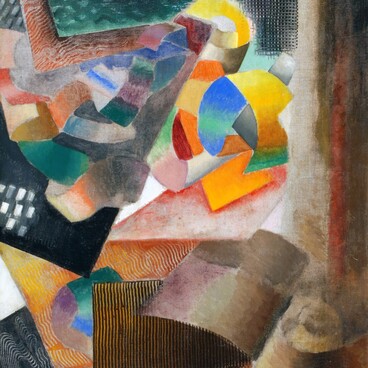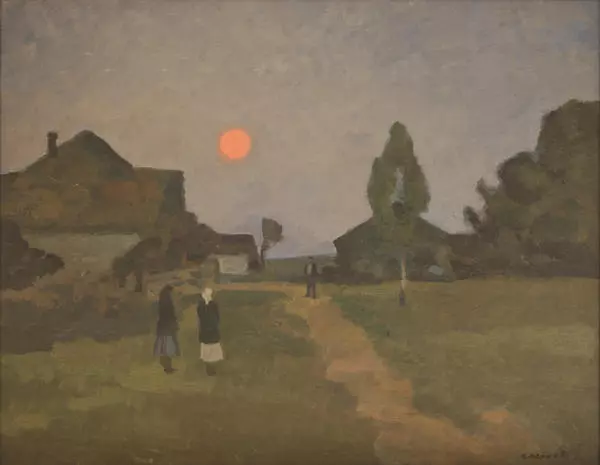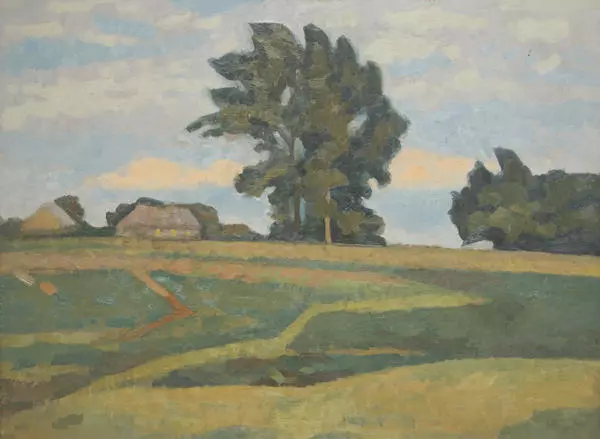Viktor Ivanov was never an artist in terms of official qualifications. In the 1960s, he became one of the courageous, dedicated subverters of the ‘socialist realist’ trend in the art world. He was classified as one of the ‘revolutionary romantics’ who adopted a so-called ‘harsh style’.
The collections at the Radishchev Museum contain one of the famous paintings done by the artist, In the Greco Cafe (1974), which is the author’s copy of a work that bears the same name that is in the State Tretyakov Gallery. This canvas is intriguing in terms of its subject matter, which is five painters that were eminent and popular in their time - Geliy Korzhev, Petr Ossovskiy, Yefrem Zverkov, Dmitriy Zhilinskiy, and Viktor Ivanov himself - during a creative trip to Italy in 1973, gathered together in the famous Cafe Greco in Rome.
The artist slightly sharpens their individuality, and just a little exaggeratedly gives concrete expression to the features on everyone’s faces. Geliy Korzhev sits in a brown suit, resting his right hand on his knee, calmly and intently, immersed in deep thought; to his left, in a gray suit, slightly bowing his head, resting his chin on his hand, Petr Ossovskiy looks attentively at the artists sitting opposite. On the other side of the table, closer to the wall, sits Yefrem Zverkov, leaning on his folded palms; to the right, in a light-colored sweater, Dmitriy Zhilinskiy crosses his arms on the table, looking down and deep in thought. In the foreground Viktor Ivanov, the portrait’s artist himself, sits at a table.
A large, beautifully painted canvas, reservedly shimmering with deep spots of cherry, olive, and black tones, draws the viewer’s attention to the intentness expressed by the figures. It is not by chance that Viktor Ivanov paints the artists in this cafe in Rome, which has its own terrific history. Founded in 1760, it was a kind of an international arts club, and served as a place for many artists, writers, and composers from around the world to meet and pass the time. Goethe, Byron, Stendhal, Shelley, Hans Christian Andersen, Bizet, Gounod, Mickiewicz, Rossini, Berlioz, Mendelssohn, Liszt, Wagner and Toscanini were all guests there. Russian artists and writers were very fond of going there. Viktor Ivanov recalled that it was this table - the one at which our artists are located - where Gogol used to sit in the last century, and according to legend it was here that he wrote most of Dead Souls, as did Alexander Ivanov, Dostoyevskiy, and many luminaries of Russian culture. Cafe Greco was the place where they used to meet and converse.
And everything in this cafe now has remained unchanged. Everything is just like it used to be more than 100 years ago. The main idea in the picture can probably be defined as the reflections of artists on the past and present in Russian art. Remaining face-to-face with the culture’s classical past, the artist himself said: “here the artists touched the past, the great and demanding past. The minutes arrived for an inner response from each person to himself, and from everyone together to history.”
The collections at the Radishchev Museum contain one of the famous paintings done by the artist, In the Greco Cafe (1974), which is the author’s copy of a work that bears the same name that is in the State Tretyakov Gallery. This canvas is intriguing in terms of its subject matter, which is five painters that were eminent and popular in their time - Geliy Korzhev, Petr Ossovskiy, Yefrem Zverkov, Dmitriy Zhilinskiy, and Viktor Ivanov himself - during a creative trip to Italy in 1973, gathered together in the famous Cafe Greco in Rome.
The artist slightly sharpens their individuality, and just a little exaggeratedly gives concrete expression to the features on everyone’s faces. Geliy Korzhev sits in a brown suit, resting his right hand on his knee, calmly and intently, immersed in deep thought; to his left, in a gray suit, slightly bowing his head, resting his chin on his hand, Petr Ossovskiy looks attentively at the artists sitting opposite. On the other side of the table, closer to the wall, sits Yefrem Zverkov, leaning on his folded palms; to the right, in a light-colored sweater, Dmitriy Zhilinskiy crosses his arms on the table, looking down and deep in thought. In the foreground Viktor Ivanov, the portrait’s artist himself, sits at a table.
A large, beautifully painted canvas, reservedly shimmering with deep spots of cherry, olive, and black tones, draws the viewer’s attention to the intentness expressed by the figures. It is not by chance that Viktor Ivanov paints the artists in this cafe in Rome, which has its own terrific history. Founded in 1760, it was a kind of an international arts club, and served as a place for many artists, writers, and composers from around the world to meet and pass the time. Goethe, Byron, Stendhal, Shelley, Hans Christian Andersen, Bizet, Gounod, Mickiewicz, Rossini, Berlioz, Mendelssohn, Liszt, Wagner and Toscanini were all guests there. Russian artists and writers were very fond of going there. Viktor Ivanov recalled that it was this table - the one at which our artists are located - where Gogol used to sit in the last century, and according to legend it was here that he wrote most of Dead Souls, as did Alexander Ivanov, Dostoyevskiy, and many luminaries of Russian culture. Cafe Greco was the place where they used to meet and converse.
And everything in this cafe now has remained unchanged. Everything is just like it used to be more than 100 years ago. The main idea in the picture can probably be defined as the reflections of artists on the past and present in Russian art. Remaining face-to-face with the culture’s classical past, the artist himself said: “here the artists touched the past, the great and demanding past. The minutes arrived for an inner response from each person to himself, and from everyone together to history.”
